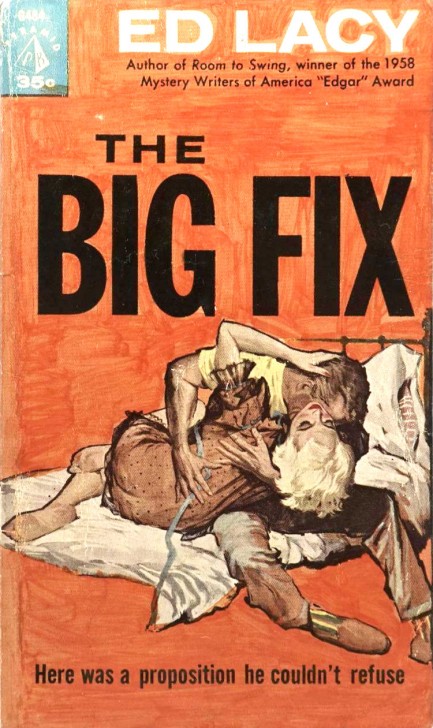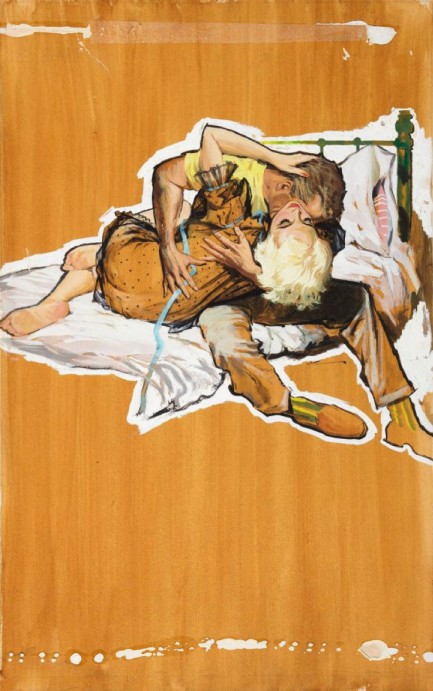| Vintage Pulp | Nov 28 2022 |

For every job there's a perfect tool.

In Ed Lacy's 1961 boxing drama The Big Fix, the fix is defnitely in, and in the worst way possible. Tommy Cork, a thirty-something middleweight boxer who in his prime battled Sugar Ray Robinson, becomes the pet project of a dilletante boxing manager who promises that with the best training, diet, and promotion Cork can reach the top again. Sounds good, but Tommy has unwittingly become the focus of a deadly scam, a plan to find some desperate boxer with a reputation for ugly losses, make a show of training him for high profile bouts, all the while taking out a life insurance policy on him, then having a hammerfisted accomplice kill him in the ring. Since the murder will happen before a crowd, there will be no suspicion of foul play, particularly for a pug known for fighting stubbornly and hitting the canvas hard.
But nothing is straightforward in Lacy's hands. Tommy's wife May, hopeful for a better life, gets into trouble with violent numbers runners, an aspiring writer sees the couple as the perfect pathetic characters to be the focus of a novel, an ex-boxer cop starts to get wise to the murder scheme, and other twists come from nowhere to infinitely complicate the tale. Despite the subplots, as readers you know the only fitting climax is one that takes place in the ring, and Lacy pushes the story inexorably toward that showdown, hapless Tommy facing off against a man who plans to kill him with a relentless assault, or if possible a single blow. If he's going to have help, he'll need to provide it himself. As usual, Lacy tells a good story. He's reliably full of excellent ideas. That also goes for Ernest Chiriacka, who painted the eye-catching cover.






































































